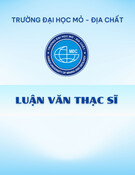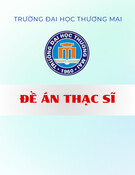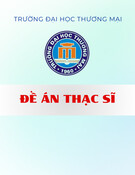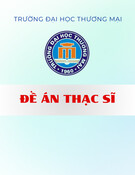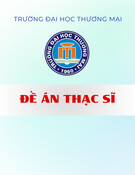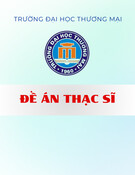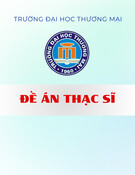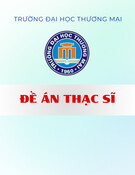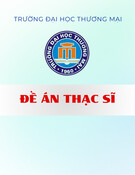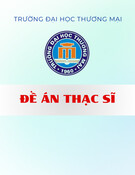
1
THAI NGUYEN UNIVERSITY
SCHOOL OF FOREIGN LANGUAGES
DUONG THI DUNG
APPLYING THE PROJECT-BASED LEARNING (PBL) TO
ENGLISH SPEAKING SKILL ENHANCEMENT FOR GRADE 10
STUDENTS AT CUA ONG HIGH SCHOOL,
QUANG NINH PROVINCE
(Áp dụng phương pháp học theo dự án để nâng cao kỹ
năng nói cho học sinh lớp 10 tại Trường THPT Cửa Ông,
tỉnh Quảng Ninh)
M.A. THESIS
Field: English Linguistics
Code: 8220201
THAI NGUYEN – 2019

2
THAI NGUYEN UNIVERSITY
SCHOOL OF FOREIGN LANGUAGES
DUONG THI DUNG
APPLYING THE PROJECT-BASED LEARNING (PBL) TO
ENGLISH SPEAKING SKILL ENHANCEMENT FOR GRADE 10
STUDENTS AT CUA ONG HIGH SCHOOL,
QUANG NINH PROVINCE
(Áp dụng phương pháp học theo dự án để nâng cao kỹ
năng nói cho học sinh lớp 10 tại Trường THPT Cửa Ông,
tỉnh Quảng Ninh)
M.A. THESIS
(APPLICATION ORIENTATION)
Field: English Linguistics
Code: 8220201
Supervisor: Prof. Dr. Dang Thi Thu Huong
THAI NGUYEN – 2019

i
THE CANDIDATE’S STATEMENT
I hereby declare that this graduation project is based on my original work
except for quotations and citation that have been duly acknowledged. I also declare
that it has not been previously or concurrently submitted for any other
courses/degrees at Thai Nguyen University or other institutions.
The candidate
Duong Thi Dung
Approved by
SUPERVISOR
Dr. Dang Thi Thu Huong

ii
ACKNOWLEDGEMENT
This research was the result of my hard work with the great support of many
people. I want to express my hearty gratitude and appreciation to my supervisor for
her patience, kindly support and useful advices during the time I conducted my
research. But for his precious comments and instructions, the thesis could not have
done effectively.
Secondly, I do appreciate the tremendous support from my school – Cua Ong
High School. I would like to give many thanks to the students who directly engaged
in the lessons throughout the process of data collection. Their enthusiasm and
serious contribution made the process of data collection effective and reliable. I also
acknowledge my thankfulness to my headmaster who helped facilitate my research
conducted smoothly.
Another special thank goes to teachers of English Department, School of
Foreign Languages, Thai Nguyen University. Without their advices and
encouragement, I would not have been able to pursuit my research.
Last but not least, my endless thanks approve to my family for their time,
encouragement, motivation and support me on my way of study.
Thai Nguyen, June 2019
Duong Thi Dung,

iii
ABSTRACT
This research tries to attempt to know the effect of project-based learning
(PBL) toward speaking ability and its effective implementation. Accordingly, this
research applied a quantitative design for the first stage. Population in this research
was the grade 10 grade students of the two classes 10A1 and 10 A2 in Cua Ong
High School. The total numbers of the respondents are 70 students. The researcher
used questionnaires, test, observation and interview as data collection. Since the
hypothesis is intended to find the effect of the PBL toward students’ speaking
ability, the Simple Linier Regression by using SPSS 19.00 for Windows was
applied. The second phase, the result of observation and interview were analyzed by
Miles and Huberman’s view of qualitative data analysis consisting of data
reduction, data display, and drawing conclusion. The result of analysis showed that
there was significant effect of Project-Based Learning toward students’ speaking
ability. Moreover, the effective procedures for the implementation of Project-Based
Learning are (a) dividing the class into groups, (b) explaining the project and (c)
performing the project. Finally, the students showed significantly positive attitude
toward the implementation of PBL in speaking class.

